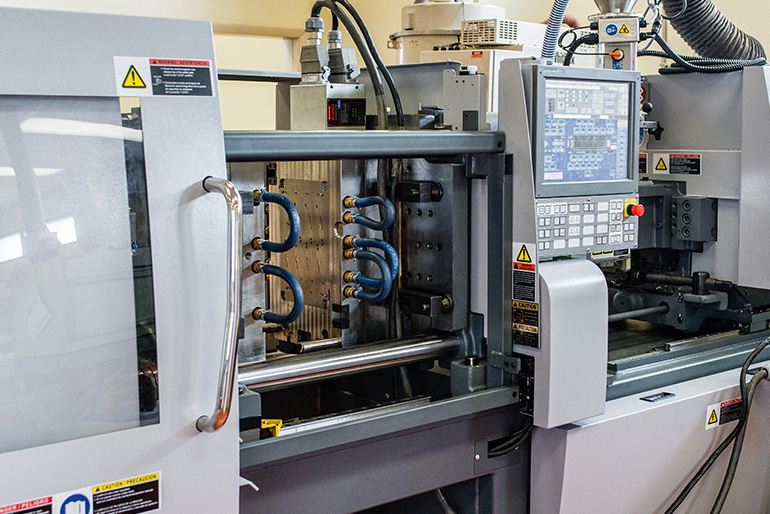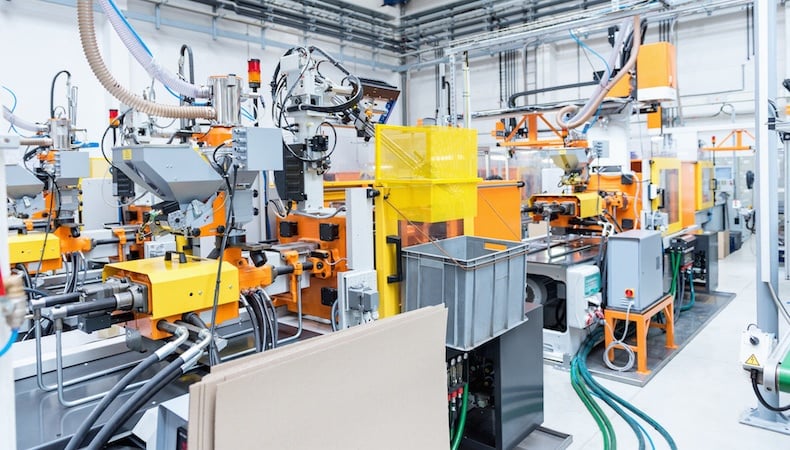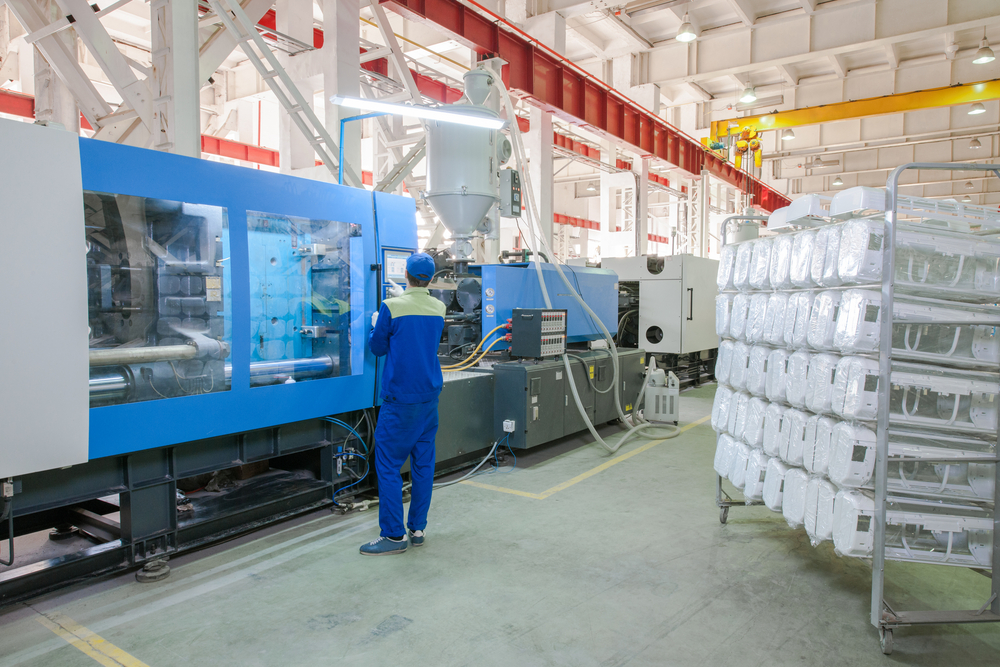Recognizing the Basics of Plastic Shot Molding Procedures
Plastic injection molding serves as a cornerstone of modern-day production, giving a systematic approach to producing complicated components with precision. This procedure not only incorporates the essential steps of melting and injecting materials right into molds yet also involves a nuanced understanding of numerous affecting aspects, such as temperature level and pressure. As markets increasingly demand effectiveness and quality, the details of this technique end up being a lot more critical. Discovering these essential components might disclose how even minor modifications can cause significant enhancements in production results, questioning regarding the capacity for innovation in this well established process.
What Is Plastic Shot Molding?
Plastic injection molding is an extensively used production procedure that changes thermosetting and polycarbonate materials right into precise and complicated forms. This method is preferred for its capacity to create high volumes of identical components with outstanding accuracy, making it a crucial technique in numerous industries, consisting of auto, consumer items, and clinical devices.
The procedure entails melting the selected plastic product and injecting it into a mold and mildew under high stress. The mold, made to the specs of the preferred component, allows the molten plastic to form as it strengthens and cools down. Once the material has solidified, the mold and mildew is opened up, and the ended up component is ejected.
Plastic injection molding provides a number of benefits, consisting of lowered waste, uniformity in manufacturing, and the capability to incorporate elaborate styles that might be challenging with various other producing techniques. In addition, it sustains a wide variety of products, each supplying one-of-a-kind residential properties that can be customized for certain applications. As sectors remain to innovate, plastic shot molding stays at the center, making it possible for the advancement of sophisticated items that fulfill evolving consumer needs.
The Shot Molding Refine
The injection molding process is a sophisticated technique that involves several key stages to generate top quality plastic components. Plastic pellets are fed right into a heated barrel where they are thawed right into a viscous liquid. This molten plastic is after that infused under high pressure right into a precision-engineered mold and mildew, which shapes the material into the wanted kind.
When the mold is loaded, the plastic is enabled to strengthen and cool, taking the shape of the mold and mildew tooth cavity. Cooling time is crucial, as it affects the cycle time and the last residential properties of the molded component. After adequate air conditioning, the mold and mildew opens, and the ended up part is ejected using ejector pins.

Products Utilized in Injection Molding
Different materials can be utilized in the injection molding process, each offering unique homes that deal with certain applications. One of the most frequently made use of products consist of thermoplastics, thermosetting plastics, and elastomers.

Thermosetting plastics, like epoxy and phenolic materials, go through a chemical modification throughout the treating process, causing a rigid, inflexible structure. These products are excellent for applications requiring high warm resistance and structural stability, often made use of in electric insulators and automobile components.
Elastomers, consisting of silicone and rubber-based products, give flexibility and strength. Their distinct properties make them ideal for applications that require flexibility, such as gaskets and seals.
Additionally, specialized materials like bio-based plastics and composites are getting grip for their ecological advantages and boosted efficiency features, widening the scope of injection molding applications in different markets. Recognizing the properties of these materials is vital for selecting the suitable kind for specific projects.
Benefits of Shot Molding
Shot molding stands out as a very reliable manufacturing process that uses numerous benefits for producing complicated get rid of accuracy. Among one of the most considerable benefits is the capability to develop elaborate layouts that would certainly be challenging or difficult to accomplish with other methods (Plastic Injection Molding). The process enables comprehensive features and tight resistances, ensuring top notch elements
In addition, injection molding is understood for its rapid manufacturing abilities, making it a perfect choice for high-volume manufacturing. When the mold and mildew is developed, components can be created swiftly, reducing preparations and enhancing general performance. This performance not only reduces manufacturing expenses yet additionally supplies an affordable edge on the market.
The flexibility of products used in injection molding better improves its charm. A large range of thermoplastics and thermosetting polymers can be used, permitting makers to choose materials that best meet their particular demands, consisting of stamina, warmth, and versatility resistance.
Furthermore, the process decreases waste, as excess material can often be recycled and reused. This sustainability element adds to a minimized environmental influence, making injection molding a liable production selection. Generally, the advantages of injection molding make it a preferred technique for several industries.
Factors Influencing Item High Quality
While countless aspects can influence product high quality in shot molding, recognizing these components is vital for accomplishing ideal outcomes. Key aspects include material option, processing specifications, and mold and mildew design.
Product choice plays a vital role, as different polymers show unique residential properties that influence flowability, strength, and thermal security. Poor material option can bring about defects such as warping or insufficient dental filling.
Processing parameters, including temperature, cycle, and stress time, need to be meticulously controlled. Variants in these settings can result in disparities partially measurements these details and surface finish. For example, exceedingly high temperatures may create degradation of the polymer, while insufficient stress can cause brief shots.
Mold and mildew design is equally important, as it establishes the circulation of the molten plastic and the cooling procedure. Inadequately created mold and mildews might bring about irregular cooling rates, causing dimensional errors and recurring stress and anxieties.

Final Thought
Finally, plastic shot molding acts as an essential manufacturing process that enables the effective manufacturing of premium elements. Mastery of the shot molding process, consisting of the understanding of materials and the influence of various variables this hyperlink on item high quality, is vital for achieving optimum outcomes. The benefits of this technique, such as cost-effectiveness and layout flexibility, additional underscore its importance across numerous markets, solidifying its condition as a favored selection for high-volume manufacturing.
Plastic injection molding serves as a keystone of modern manufacturing, giving a methodical strategy to generating complex elements with precision.Plastic shot molding uses several benefits, including reduced waste, consistency in manufacturing, and the capacity to include elaborate designs that might be testing with various other manufacturing approaches (Plastic Injection Molding). As markets proceed to introduce, plastic shot molding continues to be at the leading edge, allowing the growth of innovative items that fulfill evolving consumer needs
The shot molding process is an advanced technique that entails numerous essential stages to create top notch plastic parts.In final thought, plastic shot molding serves as a critical production process that enables the efficient production of premium components.
Comments on “Exactly How Plastic Injection Molding Drives Effectiveness in Automation”